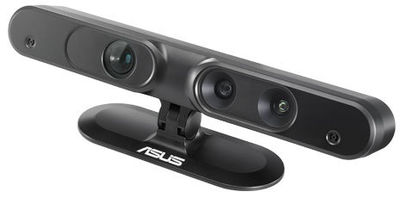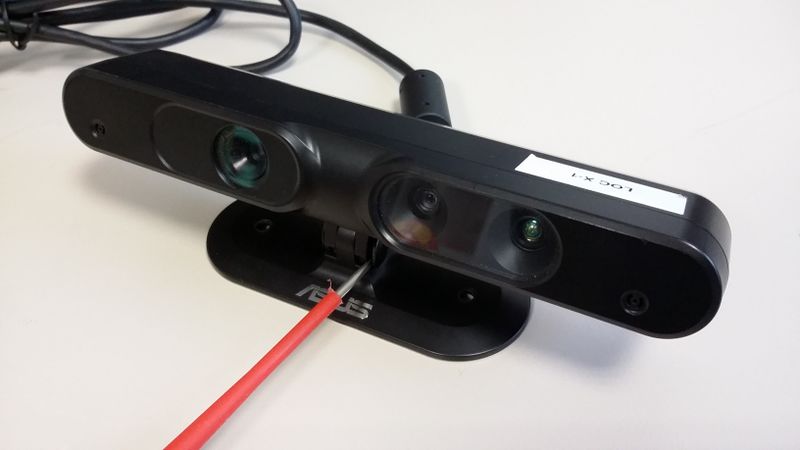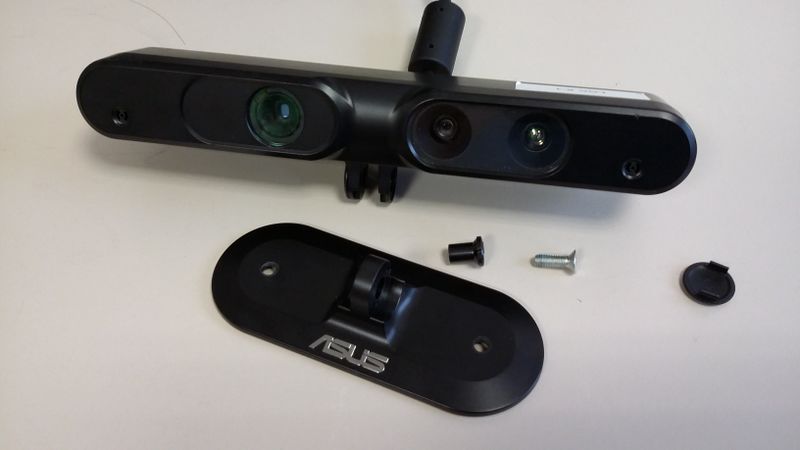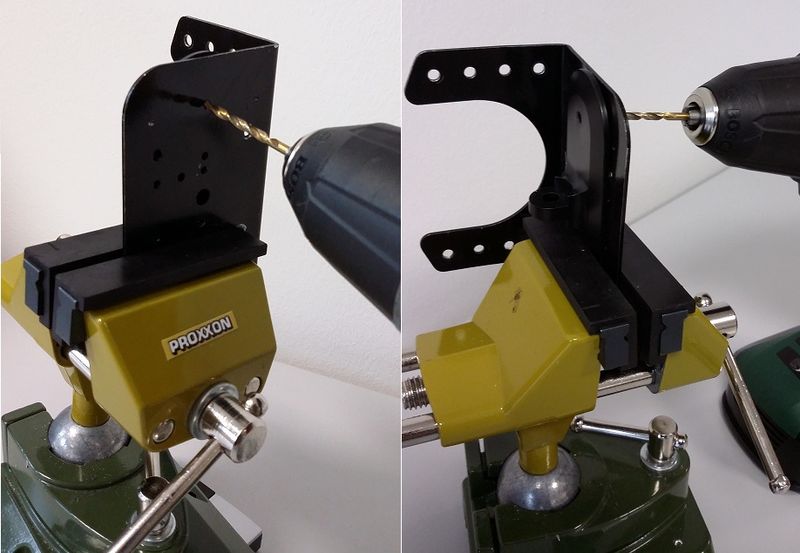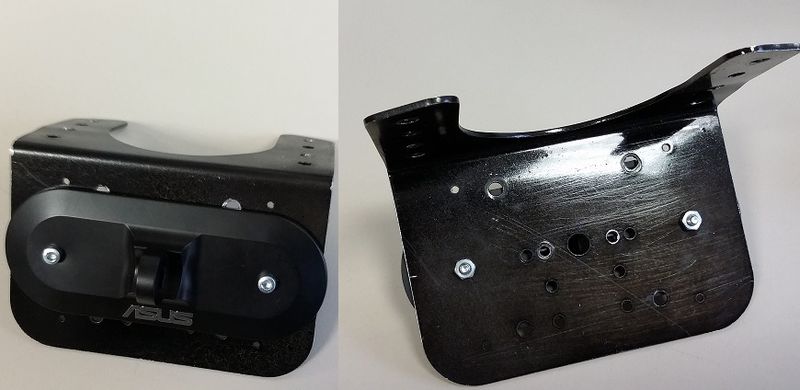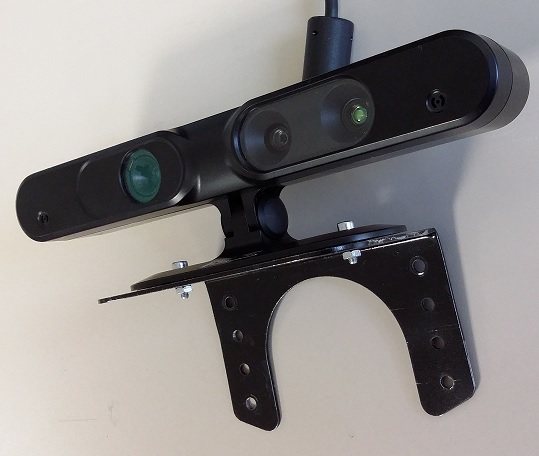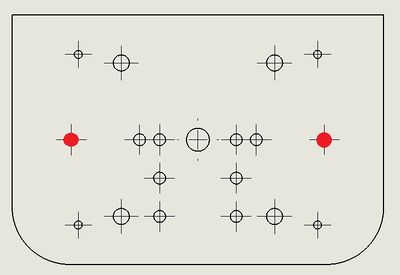Asus
- Interface: USB 2.0
Contents
Mounting the sensor on the youBot
The sensor comes without holes. Therefore you should drill two and here is how:
- Tilt the sensor backwards and with a tip of flat-blade screwdriver remove the right cover of the sensor.
- Remove the screw holding the sensor and its base together. It should look like that.
- Align the sensor base in the middle of the sensor carrier and place the two parts in a bench mount to hold them firmly together. Using the outer holes of the sensor carrier as driver and a 3 mm drill bit, drill one hole through the asus base and the sensor carrier. Repeat for the other side. (The distance between the holes is 66 mm)
- By using two M3x10 screws mount the base on the sensor carrier as shown below.
- Finally, insert back in place the screw from step 1 and you are done.
Holes used
To mount the sensor on the sensor carrier, use
- 2 x M3 length 10
and the holes shown below.
Powering the sensor
To power the sensor, plug the USB cable at one of the available USB ports.
Software
A publicly available driver for the ASUS Xtion is provided by the industry consortium OpenNI consisting of PrimeSense among others, who manufacture the underlying hardware of Kinect and ASUS Xtion. This consortium offers an open source middleware for ”Natural Interaction” devices, including support for the Kinect and the ASUS Xtion.
Further information on the driver can be found here:
http://openni.org/ http://www.ros.org/wiki/openni_kinect
Problems with working correctly with internal PC
Problems when using Kinect and Asus Xtion (robot is working too slow, robot stop working after some time etc.) are usually caused by lack of computing resources.
In general the on-board computer is capable of working with this sensors, however, there are some limitations. Usually user have to think about optimization of the algorithm eg. using only certain parts of the information provided by sensor. It is also helpful to check libraries dependencies. Some of them needs for example CUDA technology to work properly so it is impossible to implement them on on-board computer.
To check youBot on-board computer pecification please visit YouBot detailed specification
Go back to Sensors
